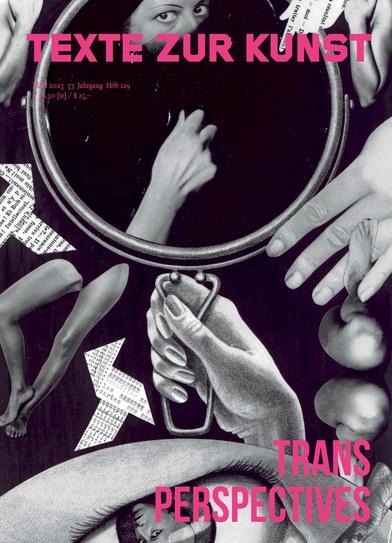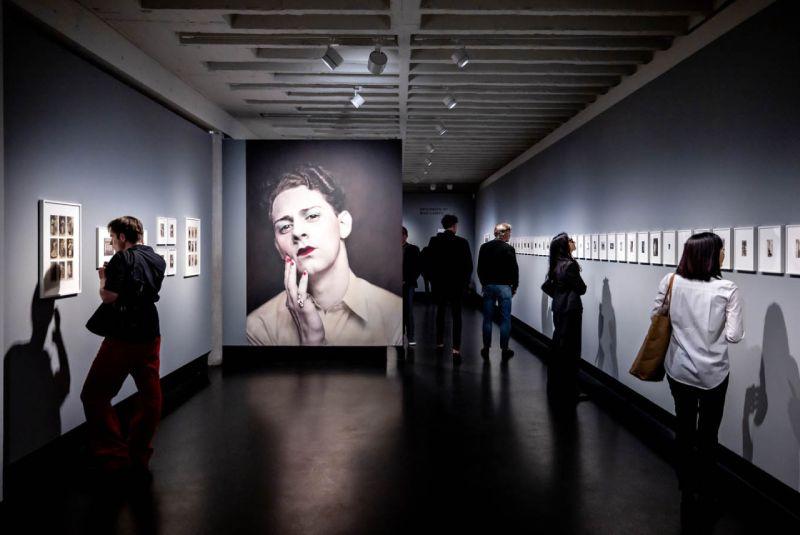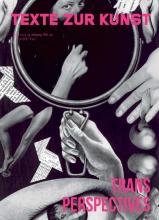
Liclair, C. and Kölbl, A., editors. (2023, March ) Texte Zur Kunst. Trans Perspectives, 129. GMBH & CO. KG 2023.
As part of our Just Portrayal Series, Aliza Keegan, DDS Media Equipment Assistant at Tisch Library, explores Representational Justice through resources available through Tisch Library.
“Judith Butler famously argues in Gender Trouble that gender is constantly constructed via the performative reiteration of gender norms. Consequentially, these norms can be gradually subverted by repeatedly enacting in alternative, dissenting ways. A larger spectrum of differently gendered people can then be accommodated in the spaces thus created. These emancipatory effects of visibility are the theoretical foundation of representational justice. ” -Luce Delire, philosopher, author, and trans-rights activist
While representational justice is a powerful tool in combatting false narratives around trans and queer identities, it can not be successful if we merely attempt to extrapolate meaning from what is directly in front of us.
By attempting to identify a concept of identity solely from what is most visible, we negate the inherent uniqueness of queer experiences.
As artist and scholar Jeanne Vaccaro states, “[Abstraction] always feels like an empty gesture to engage with art historical formulations that try to read identity into art or try not to read identity into art...If we want to talk about transness, about trans aesthetics, is it misleading to point immediately towards what is most visible?”.
This hypocrisy not only undermines what the artist is trying to convey, but also directly feeds into the binary assumptions our heteronormative society has historically held about the queer and trans experience.
In practice
Artist: Sébastien Lifshitz
Project: Bambi

C|O Berlin’s recent exhibit “Under Cover: A Secret History of Cross-Dressers”, which is featured in TZK issue 129, demonstrates how Representational Justice can be used to expand and shift heteronormative perceptions of trans identities. The show centers around the life and work of Marie-Pierre Pruvot, aka “Bambi”, a trans burlesque artist and activist who performed between the 1950's and 1970's in Paris. After retiring from the Parisian night scene, Bambi went on to study at the Sorbonne, subsequently becoming a teacher of literature and receiving the honor of the Ordre des Palmes académiques.
Her life and professional success were, and remain to be, the subject of multiple documentaries that showcase her authenticity in the face of societal pushback, including the documentary film “Bambi” by Sébastien Lifshitz, which is highlighted in C|O Berlin’s exhibit.
Representational Justice as applied to queer representation cannot be true justice if it doesn’t acknowledge the violence that inevitably comes when representing historically stigmatized communities. Although there has been a substantial increase in trans visibility in art, music, and popular media over the last few decades, it is important to also recognize the transgression that has accompanied this progress.
To truly use art as a form of resistance, we must also recognize the risks that are irrevocably linked to this progress in order to take a truly holistic approach to Representational Justice

Learn more about this resource
In this issue of Texte Zur Kunst, writers discuss perspectives of trans artists and writers, calling attention to transmisogyny and intersections between racism, anti-Semitism, and transphobia in the art field as well as to the potentials of (digital) spaces and (artistic) practices for trans people. The contributors to this issue ground their work in a particular trans materialism: combining lived experiences with a critique of visibility politics or institutions while questioning how trans materializes in the art market, in museums, and beyond.
Post created by Aliza Keegan, DDS Media Equipment Assistant.

"Documentary film about Marie-Pierre Pruvot, a French transsexual born in Algerie in 1935, a lead dancer in Paris Carousel named Bambi. While working there she obtained a degree form Sorbonne and became a professor of French literature in Cherbourg." - description from the DVD

"The March issue of TEXTE ZUR KUNST centers perspectives of trans artists and writers. They call attention to transmisogyny and intersections between racism, anti-Semitism, and transphobia in the art field as well as to the potentials of (digital) spaces and (artistic) practices for trans people. Methodologically, many contributors to the “Trans Perspectives” issue, which is co-conceived by Luce deLire, ground their work in a particular trans materialism: combining lived experiences with a critique of visibility politics or institutions, they question, among other things, how trans materializes in the art market, in museums, and beyond." - From the publisher

"[A novel] about three women--transgender and cisgender--whose lives collide after an unexpected pregnancy forces them to confront their deepest desires around gender, motherhood, and sex..."-- Publisher's description.

"In the 1950s and ’60s, an underground network of transgender women and cross-dressing men found refuge at a house in the Catskills region of New York. Known as Casa Susanna, the house provided a safe place to express their true selves. Told through the memories of those who visited, the film looks back at a secret world where the persecuted and frightened found freedom and acceptance." - From the Publisher